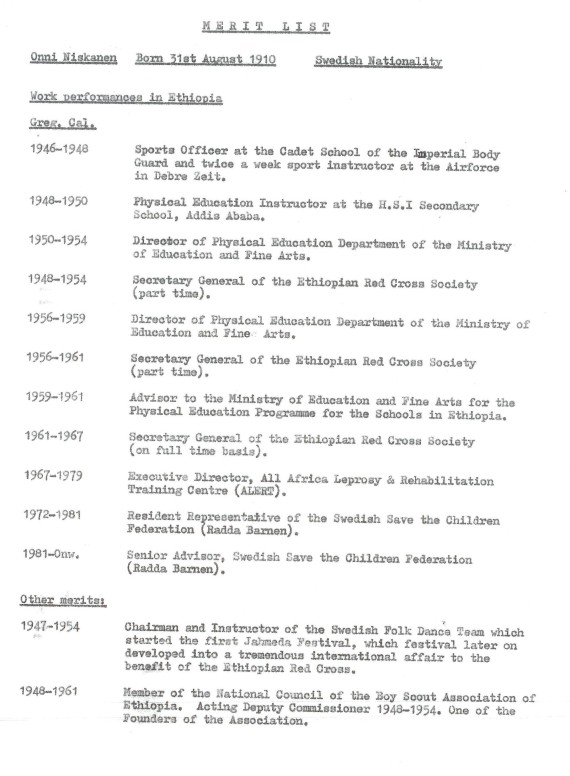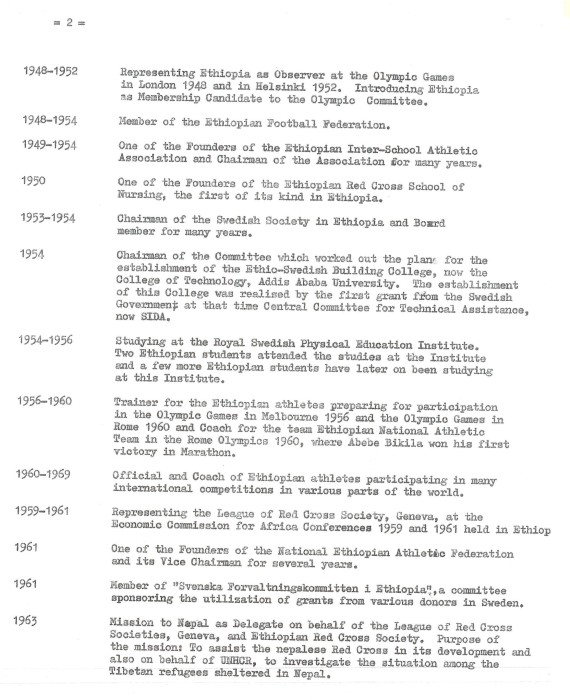
(piciture: Tim Judahs book and Onnis stopwatch)
(From Swedish Newspaper 1948)
Ethiopia to get into the Olympics – Onni Niskanen gives promises
“This year we were too late to participate in the Olympic Games” says Captain Onni Niskanen, who is joining us as the official representative for the Sports Federation in Addis Ababa. He has worked there, as a sports instructor and adviser, for two years and has had the contract extended for two more.
“I will inquire with the Olympics ‘bigwigs’ and, as soon as I get back home, I will start putting together an Ethiopian Olympics committee so that we can take part in Helsinki 1952.
So far, I have worked solely in Addis Ababa, but in the future, my work field will be extended to include the countryside, where the great talents are and the human material is especially good. That is not an exaggeration, with the barefoot boys being able to run for days in all types of terrain. As a matter of course, they play football barefoot as well. It only just happens that they bind up their ankles”, Niskanen concludes.
Below is part of an article published in the Swedish edition of Runner’s World No. 11, 2008, and is reproduced here with permission from the author.
Author: Ulf Wickbom
It all started at 2.000 metres altitude, in Ethiopia. That is where the foundation for the dominance in long distance running was laid. However, the Swede Onni Niskanen was also in this picture. He raised the first talents to become international stars. Abebe Bikila had a training based on Niskanen’s experience from Duvbo IK, GIH (The Swedish University for Gym Teachers) and Vålådalen. The Swedish broad athletics games were the model used when Niskanen organised the schools sports programmes and the Governmental activities in Ethiopia.
This is the story how Ethiopia became so dominante in longdistance running in the world and still is. I wonder if there are any trainers and coatches that are so successfull as Onni was?



